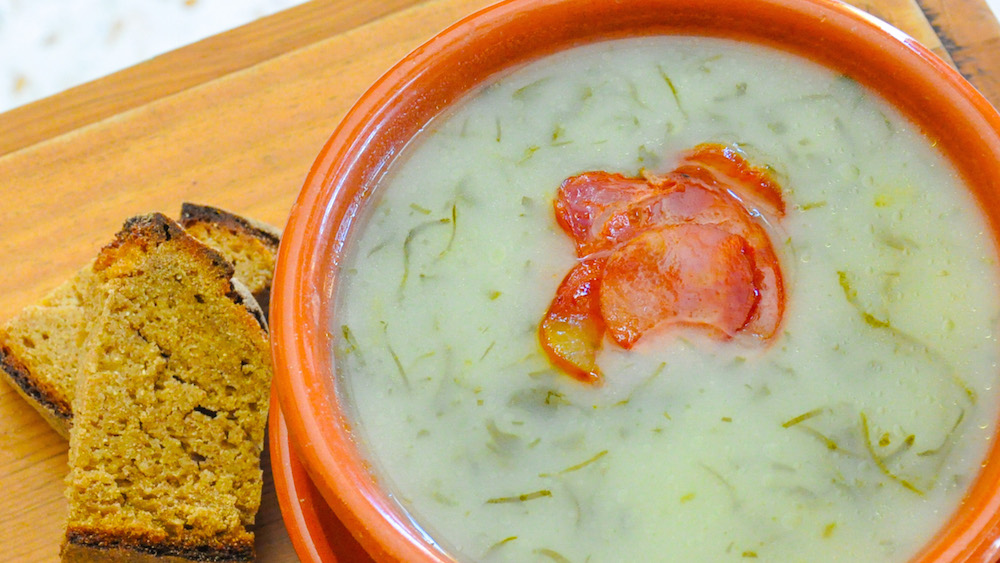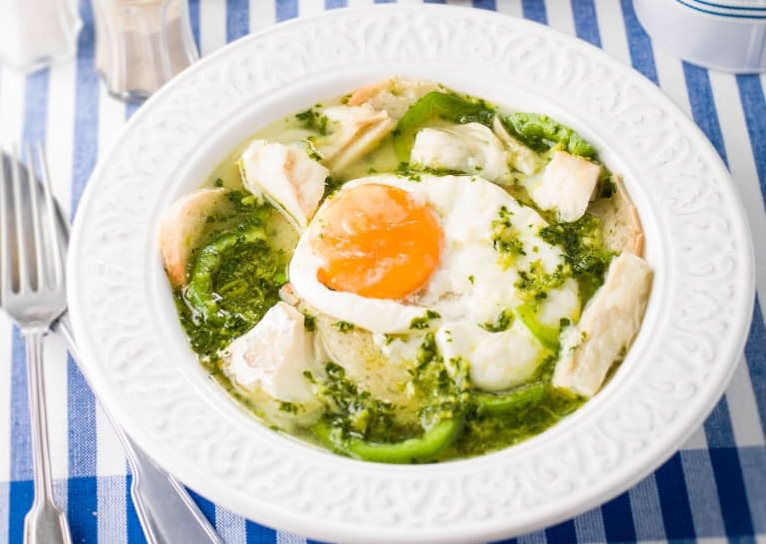Ultimate guide to the best Portuguese soups – Part 1: Vegetarian soups from Portugal

Comfort food is meant to be enjoyed all year round, but if there is one season that particularly asks for cosy warm dishes, that has got to be Winter. Here in Portugal, we love indulging in stews and heart-warming foods that tend to lean on the heavier side. But, sometimes, a good bowl of soup is all it takes to satisfy your hunger and invoke a feeling of calm in your mind.
When you eat out around Portugal, it’s easy to reach the conclusion that our diet doesn’t include that many vegetables. That’s actually not true. Not only because restaurant food isn’t always a complete representation of eating habits at home, but also because a big portion of our vegetable intake is done in the shape of soup.
While most soup is consumed as an appetizer prior to a main dish, some of Portugal’s most beloved soups are so hearty, chunky and filling that they could almost be classified as a stew, and thus often making for a complete meal.
These are the most typical Portuguese soups, which we divide into vegetarian and non-vegetarian categories for your reference.
VEGETARIAN SOUPS FROM PORTUGAL
SOPA DE LEGUMES

More than a soup, this is a genre of soups. Sopa de legumes translates literally as vegetable soup and, while this could mean a lot of things, we know that if no specific ingredients are highlighted, the most common combination would include potato, onions, carrots, a choice of green vegetable from the season, flavored with garlic, salt, pepper and olive oil. Sopa de legumes is more often than not a blended soup, sometimes having one of the ingredients, most commonly the greens, added afterwards for a little texture. Common greens featured include green beans (sopa de feijão verde), turnip greens (sopa de nabiças) and watercress (sopa de agrião).
Variations of the most common vegetable soups also include combinations such as blended chickpeas purée with soft spinach (known in Portuguese as sopa de grão com espinafres – pictured above) and creamed tomato soup with poached eggs (sopa de tomate com ovos escalfados, typical from the Alentejo region).
These are the most common soups you will come across as sopa do dia, as part of the special daily dishes of a restaurant on a given day.
CALDO VERDE

This is, without a doubt, the most popular soup across Portugal and the one that has been managing to develop quite an international reputation. The origins of “green broth” are humble, dating back to the 15th century. This is a rather simple recipe that includes a blended base of potato and onion, with thinly shredded greens, known in Portuguese as couve galega.
You will come across translations that feature kale as the main ingredient of this soup, when it is actually made with a local type of collard greens. Traditionally, Caldo Verde is consumed in terracotta bowls, and best enjoyed served with a slice of chorizo, a drizzle of olive oil, and a slice of cornbread. This soup is so relevant within the realm of Portuguese food culture, that it has been voted as one of The 7 Wonders of Portuguese Gastronomy!
GASPACHO ALENTEJANO

Portuguese gaspacho is not to be mistaken with Spanish gazpacho. They are both chilled soups, but the Portuguese version is not blended like the popular Spanish gazpacho that can even be served in glasses. Portuguese gaspacho is one of the typical soups from the Alentejo, and it’s prepared with an array of fresh vegetables cut into little chunks.
We’re talking ripe tomatoes, bell peppers and cucumber, in a medley flavored with garlic, olive oil, vinagre and herbs. The soup-like consistency of this dish is given by the addition of very cold water, thickened with hard bread. Refreshing, full of texture and an ideal option to beat the scorching heat of this Portuguese region during summer!
AÇORDA ALENTEJANA

The word soup actually comes from the germanic term suppa, that means “slice of bread soaked in liquid”. Thinking about the origin of the concept of soup, açorda alentejana is probably the Portuguese recipe which is the most loyal to this original definition.
There are açorda recipes highlighting different toppings, from poached eggs to fish. While the base broth that is poured over robust slices of bread is normally the same, prepared with garlic, coriander, olive oil and simple seasonings. This is peasant food at its best, and one of those recipes that you can also very easily make at home – Find the recipe below:
Bonus Recipe: Açorda alentejana with poached eggs
What would be the point of making your mouth water if we didn’t give you an easy fix to your cravings after reading about the best Portuguese soups? To quench your thirst for these comforting Portuguese concoctions, of course we recommend a visit to our country, where you can try all of these soups and more. But if this is not possible at the moment, we leave you with two suggestions of a simple and hearty recipe you can make easily at home.
Ingredients for 4 servings:
A generous handful of fresh cilantro (or a mix of cilantro and pennyroyal)
3 garlic cloves
4 Tbsp olive oil
1 Tbsp salt
1.5 L boiling water
4 to 8 slices of bread (sourdough / countrystyle loaf preferred)
4 eggs
Preparation:
Crush the cilantro, garlic, olive oil and salt using a mortar and pestle, or very briefly if using an electric blender. Put this mix inside a bowl, pour in the olive oil and the boiling water, creating a stock. Place the slices of bread in soup dishes, pour in the stock and serve with a poached egg on top of each individual serving. The beauty of simplicity!
Keep warm this winter. Eat Portuguese soups!
If you cook any of the above dishes at home, don’t forget to share a photo with us on Facebook or Instagram. Please tag us @tasteoflisboa #tasteoflisboa
Keep learning more on the ULTIMATE GUIDE TO THE BEST PORTUGUESE SOUPS – PART 2: NON-VEGETARIAN SOUPS FROM PORTUGAL (more bonus recipes included).
Discover more easy recipes on our blog:
Portuguese Recipes with Canned Fish
Amêijoas à Bulhão Pato – Portuguese Recipe for Clams
The Best Chocolate Cake in the World
Feed your curiosity on Portuguese food culture:
The national dish of Portugal (it’s not codfish…)
St. Anthony or St. Vincent: Who´s the patron saint of Lisbon?
10 ways to feel like a local in Lisbon
Real people, real food. Come with us, where the locals go!
Join us in our natively curated food & cultural experiences.
Follow us for more at Instagram, Twitter and Youtube
